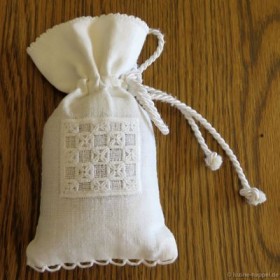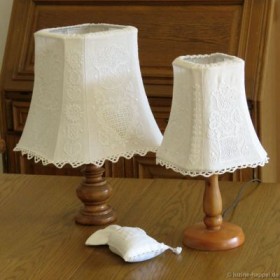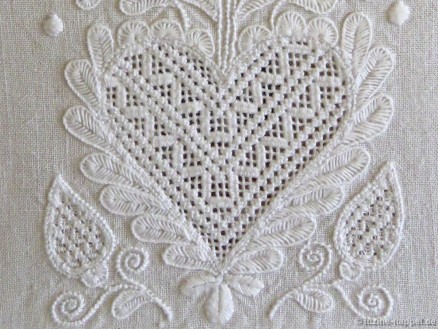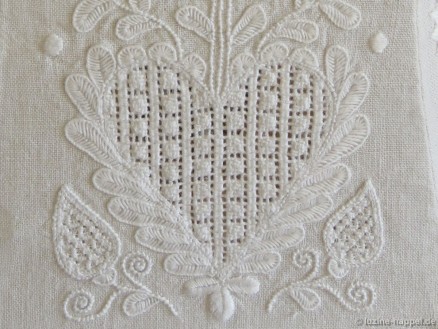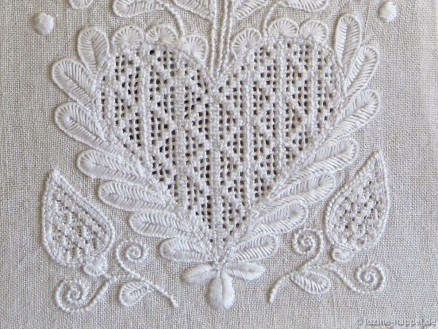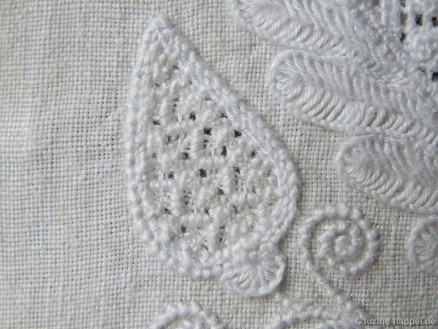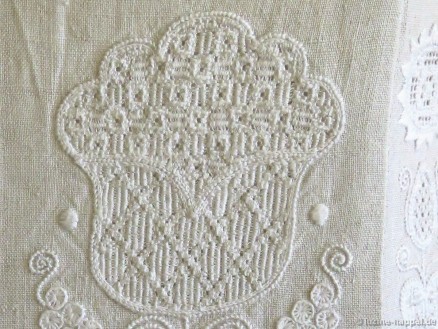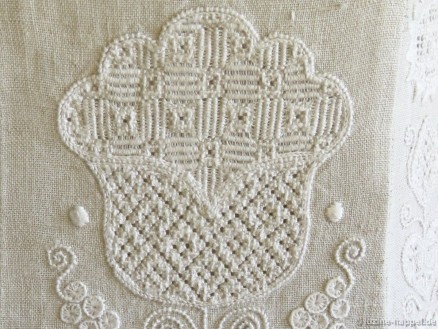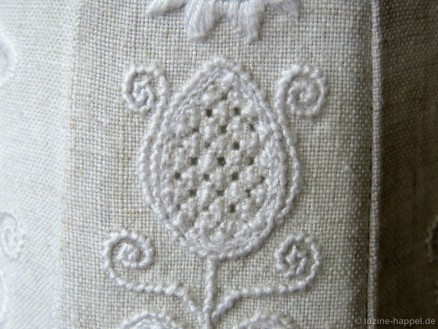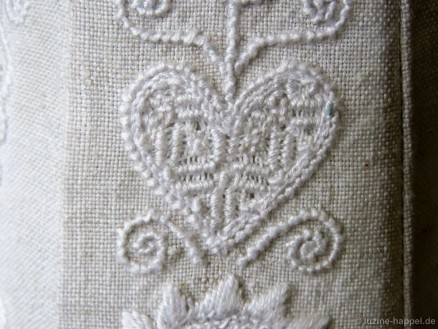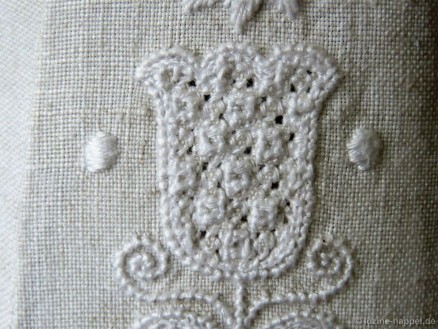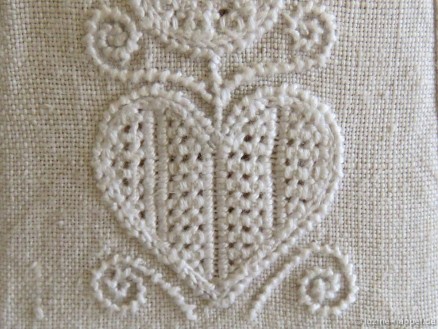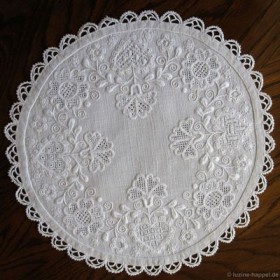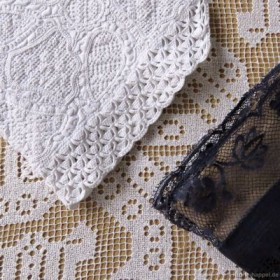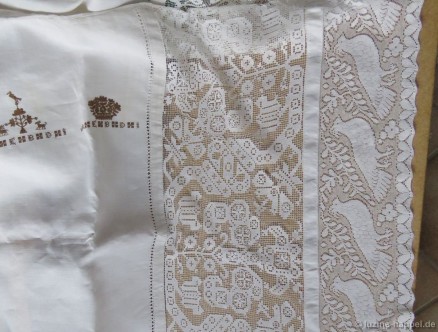An especially beautiful and elaborately embroidered round table cloth is the subject of this post.
The Anna Elisabeth Grein design, with its large motifs, provides areas that are perfect for the bestof-the-best traditional filling patterns.
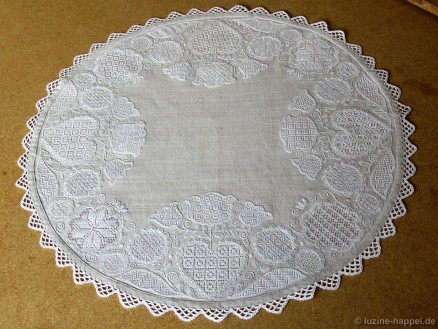 The small table cloth has a diameter of 60 cm (excluding the needlelace edging) and was worked on 16–18/cm thread count old handwoven linen. The needlelace edging was made with four-tier scallop pyramids outlined with Bullion Knot picots.
The small table cloth has a diameter of 60 cm (excluding the needlelace edging) and was worked on 16–18/cm thread count old handwoven linen. The needlelace edging was made with four-tier scallop pyramids outlined with Bullion Knot picots.
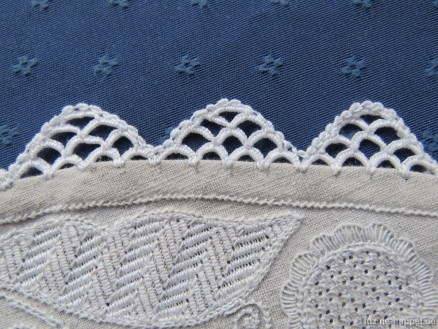 Very special to this post is that I photographed the filling patterns before laundering the piece. This makes the details of the stitches extremely easy to see.
Very special to this post is that I photographed the filling patterns before laundering the piece. This makes the details of the stitches extremely easy to see.
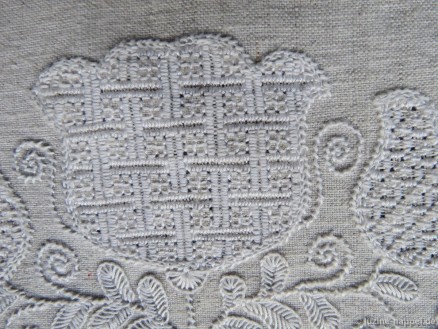 In the tulip above, a combination of filling pattern No. 447 and Double Back stitches (images 1–12) was worked.
In the tulip above, a combination of filling pattern No. 447 and Double Back stitches (images 1–12) was worked.
Also, inside the circle shape, another already described filling pattern, No. 473, was worked.
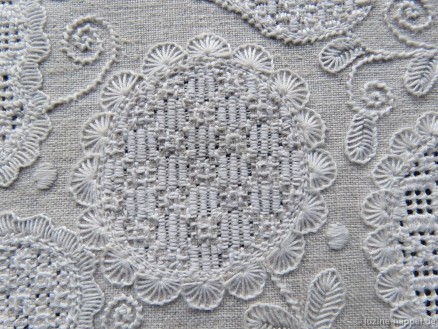 It is going beyond the scope of a blog post to explain all the filling patterns in detail. So, I shall let the pictures speak for themselves. Enjoy a close and careful look.
It is going beyond the scope of a blog post to explain all the filling patterns in detail. So, I shall let the pictures speak for themselves. Enjoy a close and careful look.
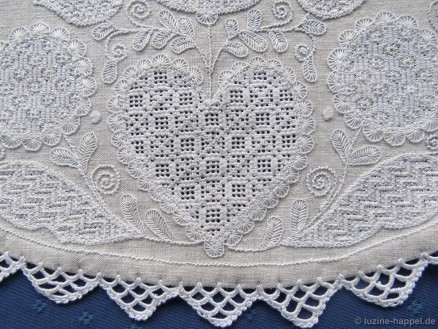
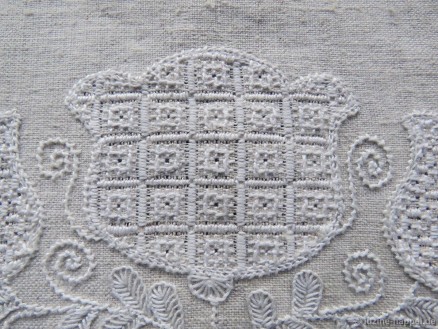
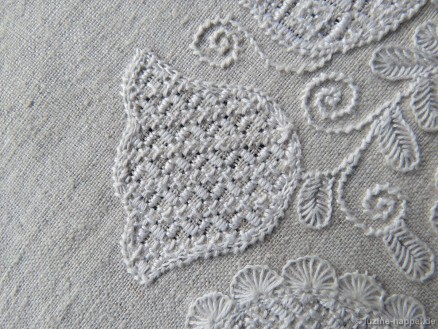
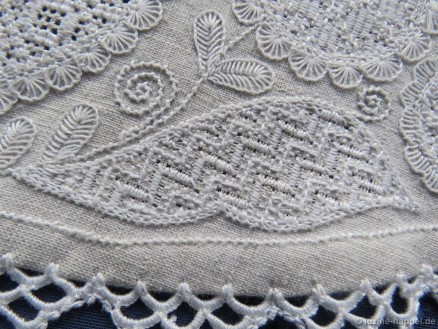
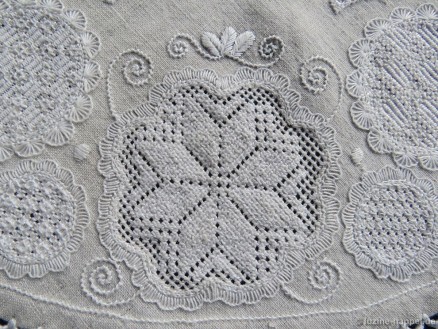
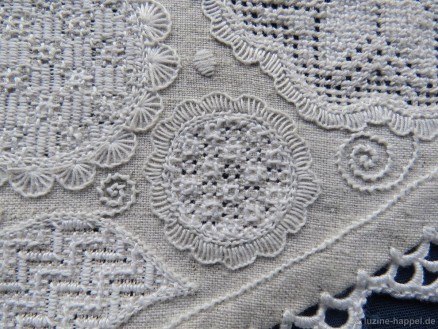
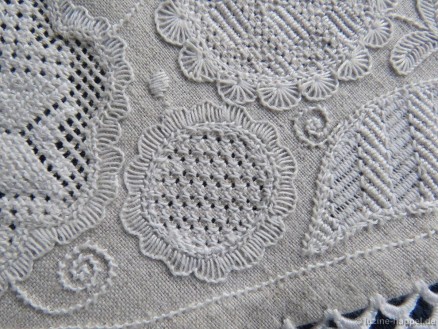
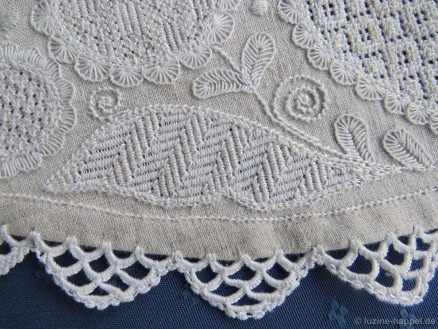
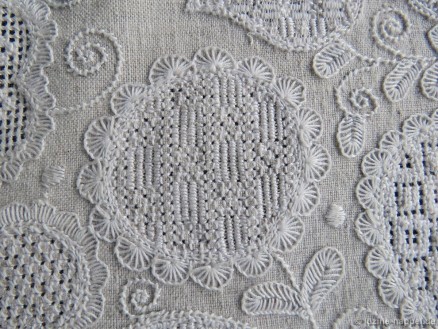
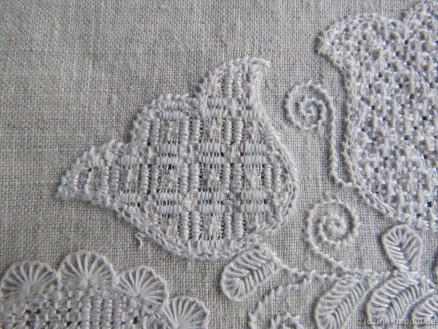
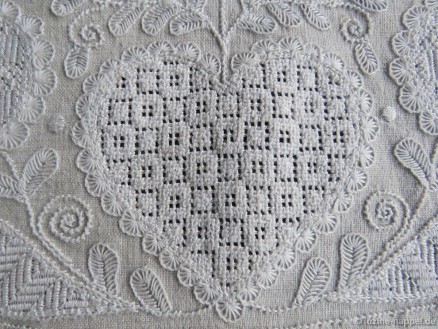
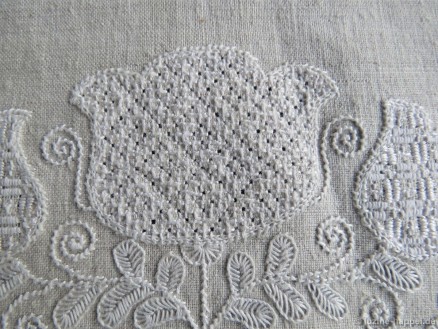
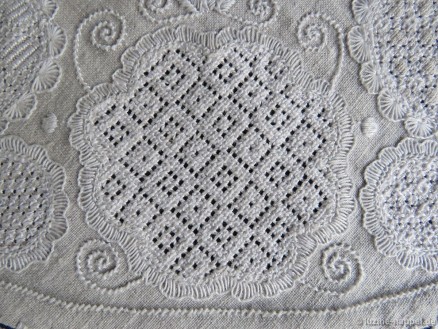
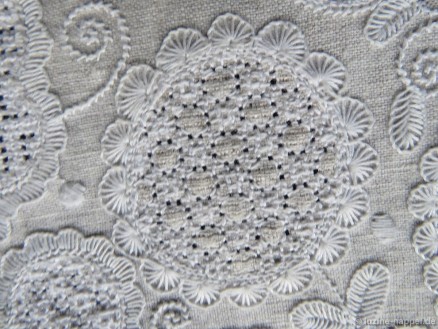
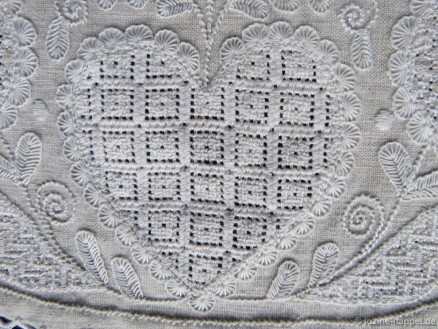
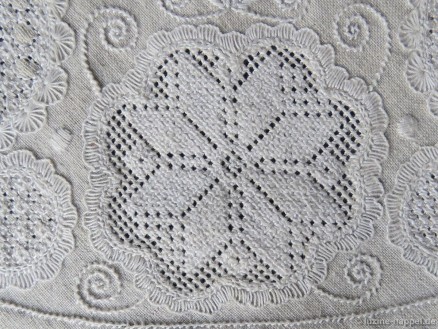
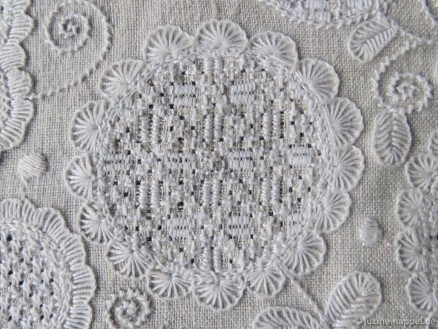
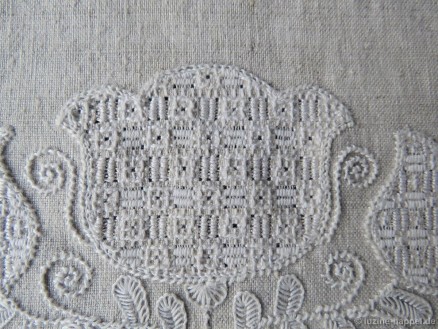
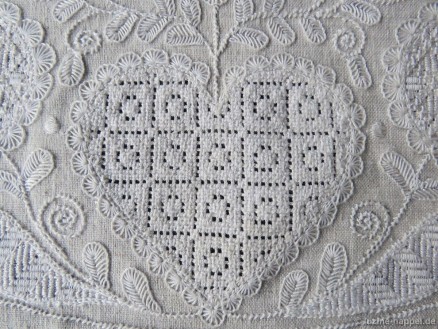
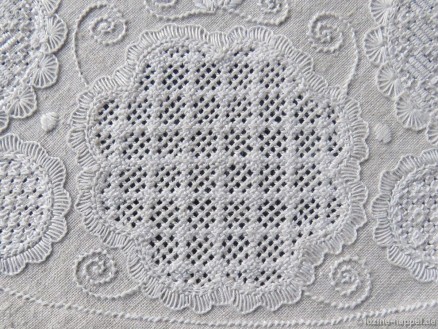
Needlelace in its different patterns can be easily practiced on small projects. On this project, you can practice simple needlelace arches.
The linen for a small sachet was embroidered with a filling pattern square,
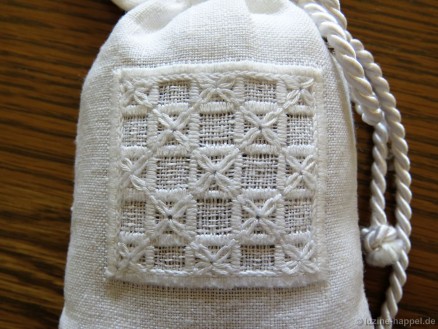 sewn closed, decorated at the upper edge with the folded Peahole edging,
sewn closed, decorated at the upper edge with the folded Peahole edging,
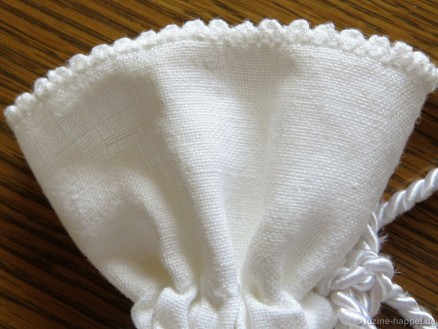 and decorated at the bottom edge with needlelace arches.
and decorated at the bottom edge with needlelace arches.
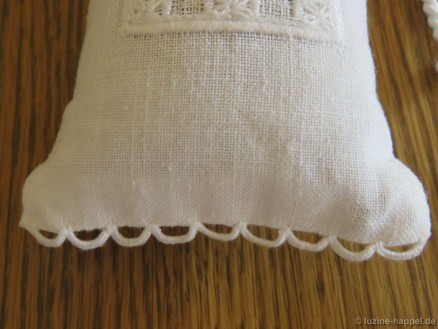 The little sack was filled with lavender and closed with a cord.
The little sack was filled with lavender and closed with a cord.
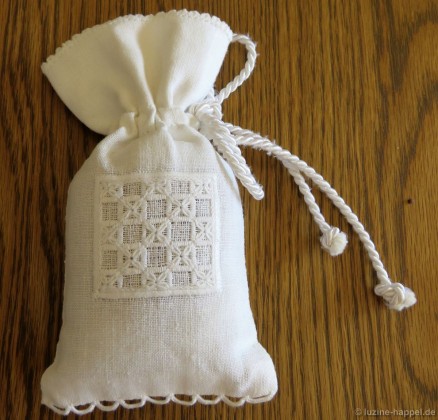 Such small bags look nice, they are relatively quick and easy to work, and they are very suitable for small gifts.
Such small bags look nice, they are relatively quick and easy to work, and they are very suitable for small gifts.
I will show the detailed steps of working in the next posts.
As already mentioned, needlelace, in the past, was used most often as decoration for clothes; today it is found on other items as well. In my previous post I showed a circular doily with a needlelace edging.
Now I want to show a small lampshade whose bottom edge is decorated with needlelace.
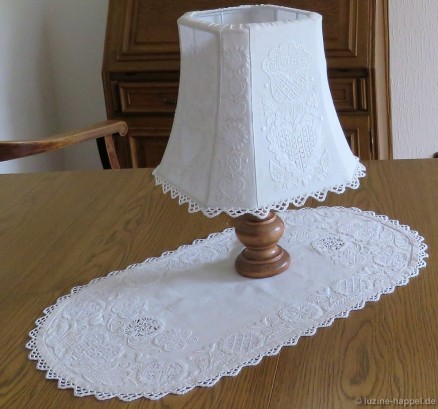 The needlelace was made in an inverted pyramid shape (3-2-1). A row of picots borders the outside edges of the pyramids and binds them together.
The needlelace was made in an inverted pyramid shape (3-2-1). A row of picots borders the outside edges of the pyramids and binds them together.
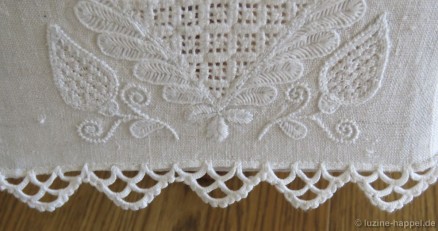 The lampshade has four wide areas and four narrow areas. Two of the wide areas – oppositely arranged – contain heart and tulip motifs, and the other two wide areas contain heart and sunflower motifs.
The lampshade has four wide areas and four narrow areas. Two of the wide areas – oppositely arranged – contain heart and tulip motifs, and the other two wide areas contain heart and sunflower motifs.
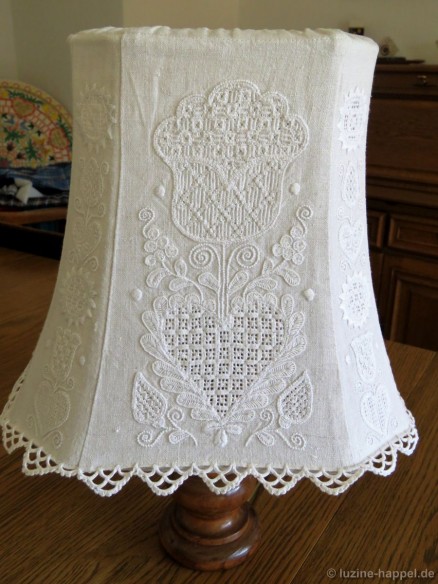 The shapes were filled with different patterns. Same motifs got similar patterns. All heart shapes were filled with openwork filling patterns with a Cable stitch grid. Needle weaving and Rose stitches in different arrangements were worked into the grid.
The shapes were filled with different patterns. Same motifs got similar patterns. All heart shapes were filled with openwork filling patterns with a Cable stitch grid. Needle weaving and Rose stitches in different arrangements were worked into the grid.
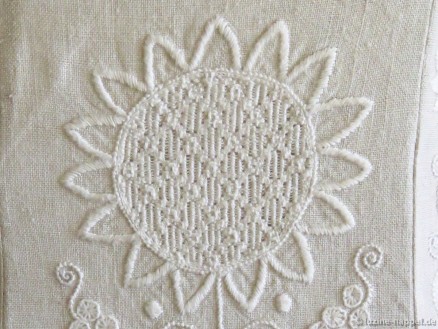
Rose stitch grid with Satin stitch bars (Filling pattern 472)
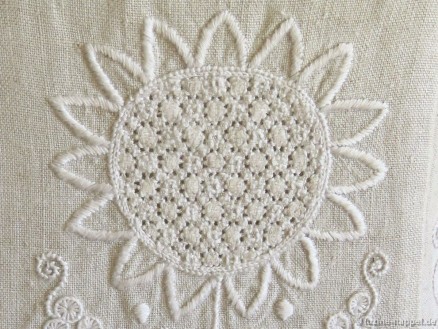
Röserich filling pattern
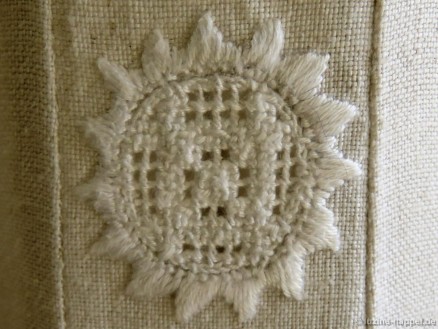
Circle with a knife point outline, and filled with an openwork pattern with a Cable stitch grid. Into the grid a Rose stitch pattern was worked.
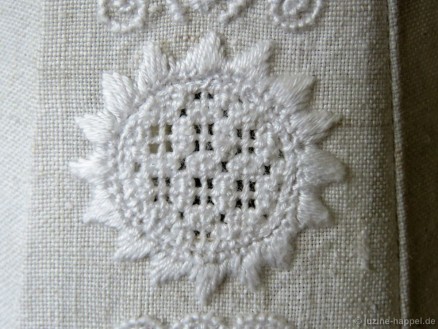
Circle with a knife point outline and filled with an openwork pattern with a Cable stitch grid. Into the grid a Rose stitch pattern was worked.
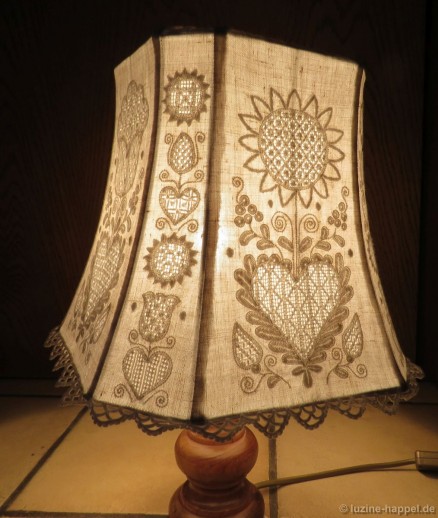 Using linen for the lampshade creates a delightfully warm light. And the needlelace also produces a lovely effect in this illumination; the edging gives the lampshade that certain something.
Using linen for the lampshade creates a delightfully warm light. And the needlelace also produces a lovely effect in this illumination; the edging gives the lampshade that certain something.
Here you can find a description on how to work such a lampshade.
While needlelace, in the past, was found at the edges of bodice sleeve cuffs, at the front edges of dyed to black bodice jackets, at the upper edges of the waistbands of the white aprons, and at the collars, the cuffs, and the necks of men´s shirts, today it is used most often as decoration for small oval or circular doilies and narrow heart-shaped cushions.
An oval runner with needlelace is found in my post “One Schwalm design – Two Interpretations (1)”.
Here I want to show a circular doily with a diameter of 29 cm. Along the perimeter a 1 cm hem was worked. Above the hem seam, one row of Chain stitches was worked as additional decoration.
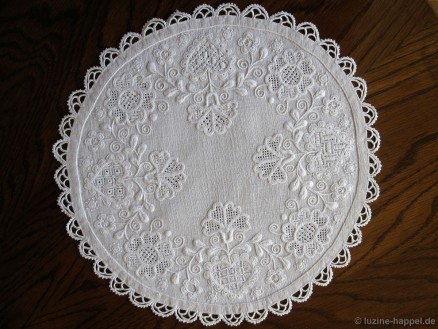 The needlelace was made in a double row: two scallops were placed side by side. A third scallop was stitched on top of the two to connect them. A fourth scallop spans over the trio. This scallop was additionally decorated with picots.
The needlelace was made in a double row: two scallops were placed side by side. A third scallop was stitched on top of the two to connect them. A fourth scallop spans over the trio. This scallop was additionally decorated with picots.
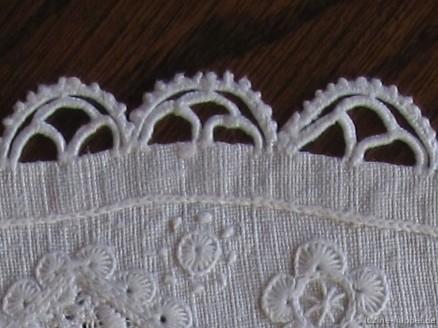 The doily was elaborately embroidered. Heart, carnation, and one other bloom provided areas for a number of filling patterns. Only Limet filling patterns were used. The hearts were outlined with Blanket stitch half-eyelet scallops. Small flowers of Blanket stitches, French Knots and Satin stitches, leaves of Satin stitches and tendrils fill the remaining areas between the large motifs.
The doily was elaborately embroidered. Heart, carnation, and one other bloom provided areas for a number of filling patterns. Only Limet filling patterns were used. The hearts were outlined with Blanket stitch half-eyelet scallops. Small flowers of Blanket stitches, French Knots and Satin stitches, leaves of Satin stitches and tendrils fill the remaining areas between the large motifs.
It is apparent that no Coral Knot stitches were used. Stems and tendrils were made with Chain stitches, and the shapes were outlined with double rows of Chain stitches.
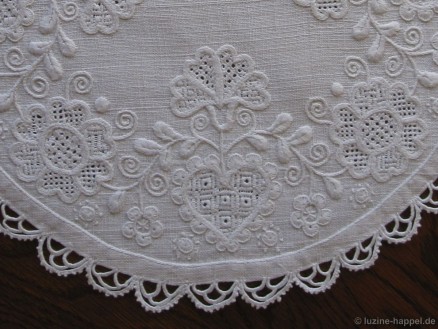 The pattern of the first heart was established with Square Eyelets, pairs of Satin stitch bars and Rose stitches. The four petals of its carnation were mirrored on the longitudinal axis and filled with two different patterns. Rose stitches created the first pattern, whereas squares of Satin stitch bars, filled with diagonally running Satin stitches, established the second pattern.
The pattern of the first heart was established with Square Eyelets, pairs of Satin stitch bars and Rose stitches. The four petals of its carnation were mirrored on the longitudinal axis and filled with two different patterns. Rose stitches created the first pattern, whereas squares of Satin stitch bars, filled with diagonally running Satin stitches, established the second pattern.
The center of the circle flower was filled with Rose stitches. The six petals were decorated mirrored. Four-Sided stitches, Cable stitches and the 2-pattern of Satin stitches were worked.
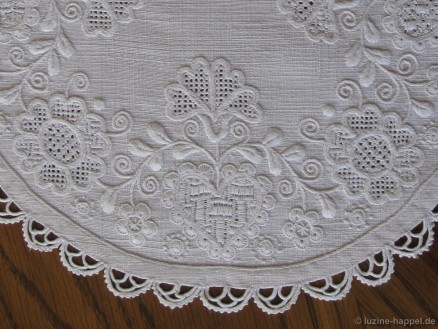 The second heart was filled with blocks of Satin stitch bars, with alternating single and double Satin stitch bars. The petals of the corresponding carnation were filled with Four-Sided stitches.
The second heart was filled with blocks of Satin stitch bars, with alternating single and double Satin stitch bars. The petals of the corresponding carnation were filled with Four-Sided stitches.
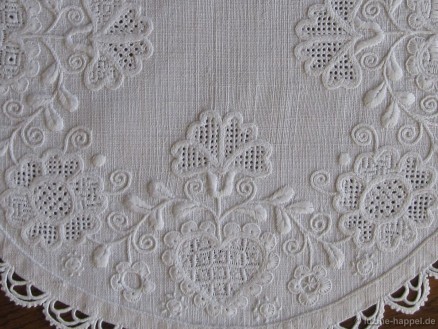 The third heart was filled with a pattern of Satin stitch bars and Rose stitches. The petals of the corresponding carnation were filled with alternating rows of Four-Sided stitches and Satin stitch bars.
The third heart was filled with a pattern of Satin stitch bars and Rose stitches. The petals of the corresponding carnation were filled with alternating rows of Four-Sided stitches and Satin stitch bars.
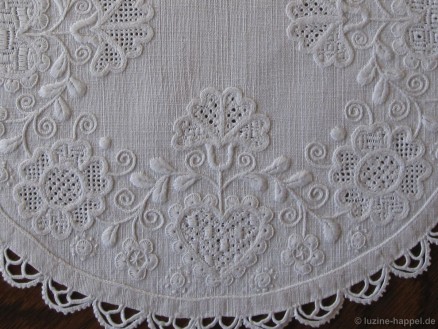 The fourth heart was filled with a Rose stitches grid. Into the grid double Satin stitch bars were worked. The petals of the corresponding carnation were filled in the same way as the first carnation.
The fourth heart was filled with a Rose stitches grid. Into the grid double Satin stitch bars were worked. The petals of the corresponding carnation were filled in the same way as the first carnation.
This wreath design includes many narrow shapes. They were filled with different patterns that mostly turned out well. So, this doily project is a good example of filling narrow shapes differently and successfully.
Schwalm whitework was often combined with lace. The most common was needlelace, but there were also other kinds of lace in the Schwalm.
1. needle
2. bobbin
3. machine-made
4. sprang
5. filet
6. Dresden
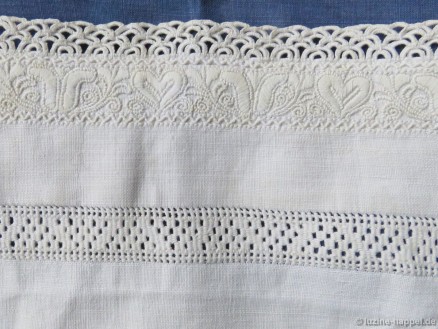
Sleeve cuff of a traditional Schwalm bodice decorated with needlelace, whitework, and a needleweaving hem.
Needlelace was worked in a wide variety of different patterns.
Needlelace was also worked with coloured thread to embellish garters and cap bands.
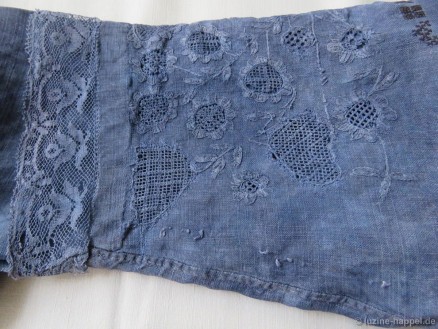
Sleeve cuff of a traditional dyed-to-blue Schwalm bodice decorated with bobbin lace, whitework, and Cross stitch initials.
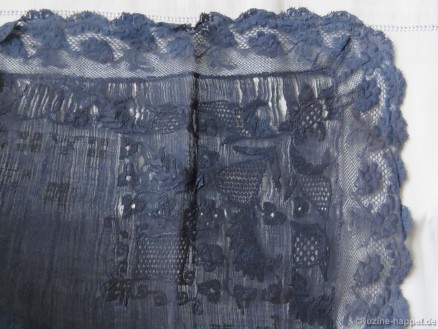
Traditional dyed-to-blue Schwalm decorative handkerchief with bobbin lace, whitework and Cross stitch crowns and initials.
Bobbin lace is also found on bed coverings, door hangings, and at the front edges of the dyed-to-blue communion caps. It is also found on knitted baby caps.
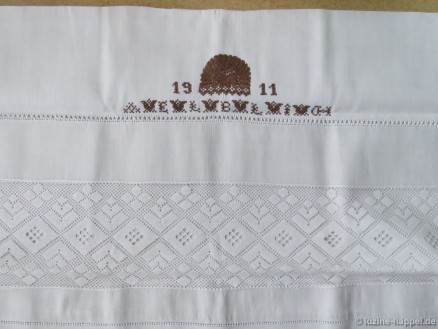
Parade cushion decorated with machine-made lace, Peahole hem and Four-Sided stitch hem, and a crown with the year and initials in Cross stitch.
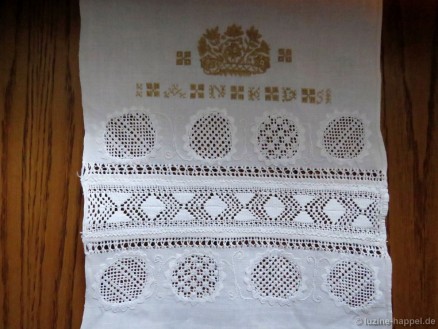
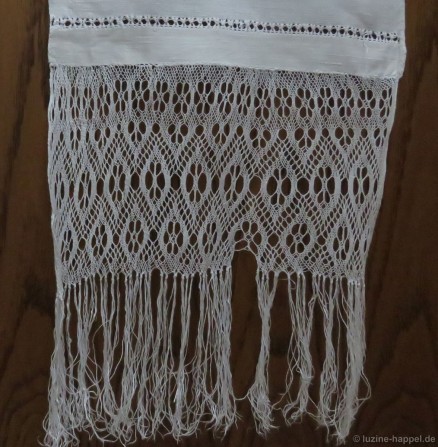
Two parts of a door hanging decorated with Schwalm whitework borders, Peahole hems, a needle weaving hem and sprang.
5. Filet is found on bed coverings and door hangings.
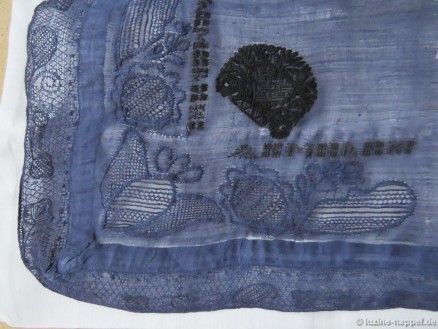
Very old decorative handkerchief dyed to blue. It is decorated with a Schwalm crown and initials worked with Cross stitches, whitework motifs, and a band with Dresden lace at two edges (and a small bobbin lace band at the remaining two edges – not shown in this picture).
All of these will be subjects of more detailed articles in the future.

